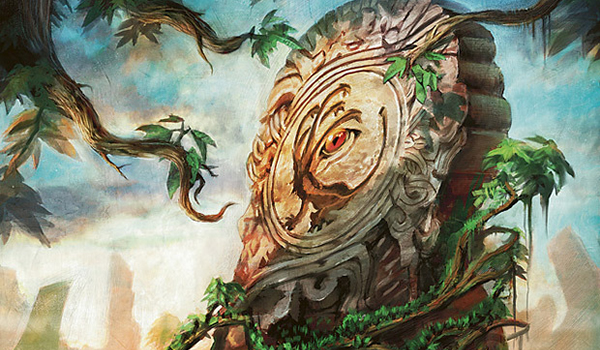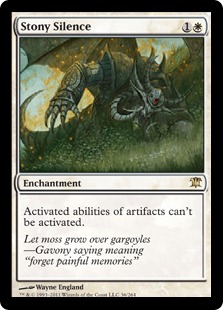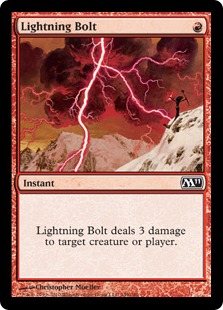Are you a Quiet Speculation member?
If not, now is a perfect time to join up! Our powerful tools, breaking-news analysis, and exclusive Discord channel will make sure you stay up to date and ahead of the curve.
Modern remains wide-open, which carries implications for deckbuilding. Last week, I talked about mainboard flex slots. This week, we’ll tackle a significantly thornier topic: sideboarding. Due to Modern's wide variety of linear decks, and the relative lack of powerful catch-all answers that you see in formats like Legacy or Vintage, ours is a format that puts a lot of pressure on sideboard slots. Building a proper sideboard is crucial to successful event preparation.

This article is the second in a two-part series that breaks down the implications of an open metagame for prospective deckbuilders. It discusses various sideboard-building philosophies, and analyzes which work best in a diverse field. As with mainboard flex spots, we'll see that proactive decks and reactive decks operate differently on this front.
Careful Study: Categorizing Decks
In order to provide a framework in which to evaluate sideboard choices, I've summarized this handy tier list breakdown by the MTG DataMine to see if we can spot any trends. We'll only include decks indicated in the analysis as being 1% of the metagame or more to keep things brief. The categorizations will mostly be done in accordance with Jordan’s article on archetype conventions. I will also note common types of sideboard cards that shine against the decks in question.
One takeaway from these numbers is that graveyard hate is awesome right now---many of the decks performing well of late derive value from it in some form or fashion. The splashability of pieces like Relic of Progenitus and Grafdigger's Cage provides ample incentive to pack at least some graveyard interaction. Land hate is also in a good spot, although few decks can easily accommodate cards that can punish Modern's ubiquitous greedy manabases.
Slice and Dice: Proactive vs. Interactive
In moving beyond these broad trends, we must again distinguish between proactive and interactive decks. My definition of proactive deck, for the purpose of this analysis: one heavily invested in advancing its primary gameplan at the expense of interacting with its opponent’s. Interactive decks do the opposite.
Thunderstruck: Proactive Decks
 As mentioned above, most proactive decks are linear in nature, and generally should expect opponents to board in "hate cards" or "hosers" that inhibit their deck’s gameplan. Some classic examples include Stony Silence against Affinity or Relic of Progenitus against Dredge.
As mentioned above, most proactive decks are linear in nature, and generally should expect opponents to board in "hate cards" or "hosers" that inhibit their deck’s gameplan. Some classic examples include Stony Silence against Affinity or Relic of Progenitus against Dredge.
One major decision proactive deck pilots must make is whether to dedicate sideboard space to fighting hosers, or to try dodging them in the interest of bolstering their matchups against the field at large. The validity of either of approach depends heavily on how generally applicable the hosers in question are against the field. Remaining space should be used to address potential weaknesses in the primary gameplan. Proactive decks generally don’t want to side in many cards at once---diluting their primary gameplan rarely ends well.
An example of a deck that packs cards to fight back against hate is Dredge. As we saw in the summary of frequently played Modern decks above, graveyard hate comes in handy against a wide variety of decks, which means that most opponents facing Dredge should have cards to bring in against them. A Dredge pilot that prepares for the hate gives the deck a shot to succeed, as evidenced by this list that did well in a Magic Online PTQ:
Dredge, by wild88plk (7-1, Modern PTQ #10985218)
This Dredge sideboard features various ways to destroy the artifacts and enchantments typically used to hold down graveyard decks, employing Abrupt Decay, Ancient Grudge, Maelstrom Pulse, and Nature's Claim. Its remaining space is mostly spent on ingeniously covering its primary gameplan’s main weakness (spell-based combo decks such as Storm) with Failure // Comply. If cast from the hand, this card buys Dredge two turns to finish opponents before their payoff spells hit. Furthermore, Comply can be proactively used from the graveyard to stall for a turn.
Another deck that considers this approach is the resurgent Infect. Thanks to the possible speed of aggro-control decks, few Modern decks have ever done well while skimping on spot removal, so poison counter enthusiasts should expect to protect or replace their creatures with some regularity. And most decks pack at least a couple of extra removal pieces in their sideboard. Fortunately, there are several options an Infect pilot can use to ward off enemy interaction to good effect. Here’s a list from the recent SCG Regionals tournament in Atlanta that prepared for spot removal:
Infect, by Zan Syed (4th, SCG Regionals Atlanta)
Zan's sideboard employs a variety of anti-interaction tools. It has the classic permission package of Dispel and Spell Pierce, a redirection effect in Spellskite, and a useful newcomer in Shapers' Sanctuary. Sanctuary keeps Infect from running out of gas as it uses protection spells to ward off removal, improving the deck's defensive and counterattack capabilities. As with Dredge, this list's remaining sideboard real estate counters Infect's other major weakness (artifacts such as Chalice of the Void and the aforementioned Spellskite).
Lastly, we’ll look at the other side of the coin. A proactive deck that I don’t believe should worry much about sideboarding for hosers is Gx Tron. This powerful big-mana deck requires somewhat specific hate cards to be bottled up (Blood Moon and Spreading Seas come to mind), and even those cards only buy the opponent time. Rather, Gx Tron should focus its sideboard on beating the fast aggressive decks that have preyed on it over the years. This list espoused those priniciples to the tune of a 6-1 finish at a recent Modern Challenge:
GB Tron, by dm95 (6-1, Modern Challenge)
Not allotting much space to anti-hoser tech lets Tron play powerful anti-aggro tools like Thragtusk and Thought-Knot Seer, along with some ever-handy graveyard hate in Relic of Progenitus. All that said, GB Tron is somewhat unique among successful proactive decks in its ability to ignore hate cards.
Blood and Thunder: Interactive Decks
 Interactive decks face a similar dichotomy to proactive ones when crafting their sideboard, but in the opposite direction. While packing sideboards with focused hosers can turn certain matchups around, it’s a bet that only cashes in against opponents vulnerable to those particular hosers. As there simply aren’t enough sideboard spots to hose the entire field, interactive decks must decide between specialist and generalist sideboards. The latter affords them room to tech for unfavorable matchups, at the expense of not squelching the proactive types quite as efficiently.
Interactive decks face a similar dichotomy to proactive ones when crafting their sideboard, but in the opposite direction. While packing sideboards with focused hosers can turn certain matchups around, it’s a bet that only cashes in against opponents vulnerable to those particular hosers. As there simply aren’t enough sideboard spots to hose the entire field, interactive decks must decide between specialist and generalist sideboards. The latter affords them room to tech for unfavorable matchups, at the expense of not squelching the proactive types quite as efficiently.
One deck that favors a generalist sideboard is Jeskai Tempo. Because the combination of burn spells, counterspells, and instant-speed threats is so universally effective, Jeskai has little need to pack hate cards for one or two decks. Instead, it can use that sideboard space to aim at graveyard and big mana strategies, which the Jeskai mainboard is soft to. Here’s another example list from the Modern PTQ that illustrates this point:
Jeskai Tempo, by superradjoe (7-1, Modern PTQ #10985218)
Even seemingly narrow cards in this sideboard (like Ceremonious Rejection and Celestial Purge) cover a lot of ground. Rejection works against Eldrazi or Tron in addition to Affinity and Lantern Control, and Purge answers anything from Blood Moon to Liliana of the Veil to Death's Shadow to Tasigur, the Golden Fang. The main cards of interest in this sideboard are Disdainful Stroke (handy against big-mana decks of all stripes in addition to anyone trying to cast Collected Company or Gifts Ungiven) and article all-star Relic of Progenitus.
Of course, many interactive decks do have a “blind spot” wherein their interaction lines up poorly with what opponents are doing. These matchups are generally to be considered extremely difficult to win unless the pilot packs dedicated hate. When expecting the blind-spot deck in question, preparing to face it can be sound strategy, so long as the hosers do not compromise effectiveness against the field. Take Death and Taxes, which is generally considered to fare poorly against fast go-wide decks like Affinity unless it hates them out post-board. Here’s a list that did exactly that at an SCG Regionals tournament in San Diego:
Death and Taxes, by Gilbert Saiz Jr. (8th, SCG Regionals San Diego)
While Stony Silence might raise eyebrows given the number of artifacts in this shell (especially considering most of them are handy against the likes of Affinity, and thus unlikely to come out postboard), having the ability to deal a crippling blow to the robots’ efficiency makes having the card worthwhile. Another pseudo-hoser for go-widers in Settle the Wreckage gives the deck more shots at finding the backbreaker it needs to overcome that sort of tough matchup. As Modern becomes less open mid-season, hedging against specific strategies in this way can yield many victories.
In the End
That’s all for this series. I hope you’ve enjoyed it. If you have any thoughts on the deckbuilding philosophy principles I espoused in this or my previous article (in agreement or otherwise), please leave them in the comments section below. I look forward to your feedback, and thanks for reading.




